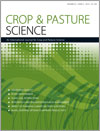Lucerne is the most important and widely grown legume crop in world pastoral agriculture. However, persistence is critical for most pastoral production systems and great strides have been made for increasing lucerne persistence across all production systems. The history, needed traits, and current and future developments of breeding for lucerne persistence are reviewed.
CP12009 Abstract | CP12009 Full Text | CP12009PDF (798 KB) Open Access Article




